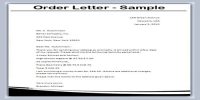Strategic evaluation and control is the process of determining the effectiveness of a given strategy in achieving the organizational objectives and taking corrective action wherever required. Anyway, the steps in the strategic evaluation and control process are shown by the following figure:

- Determine what to measure:
Managers need to specify what implementation process and results will be monitored and evaluated. Measurement must be found for all important areas, regardless of difficulty. It’s complicated, but you must prioritize what to manage because you cannot observe and assess every minute factor that might impact your strategy. The strategists must mention the degree of tolerance limits between which the variance between actual and standard performance may be accepted.
- Establish a standard of performance:
Standards are detailed expressions of strategic objectives. Standards should be set not only for output but also for intermediate stages. If appropriate means are available for measuring the performance and if the standards are set in the right manner, strategy evaluation becomes easier. Setting control standards, which can be quantitative or qualitative, helps, determine how you will measure your goals and appraise improvement. The measurement must be done at the right time else evaluation will not meet its purpose.
- Measure Actual Performance:
Once standards are set, the next step is to measure your performance. Measurement helps compare actual performance with standards. Measurement must be made at predetermined times. Measurement can then be addressed in monthly or quarterly review meetings. For measuring the performance, financial statements like – balance sheet, profit, and loss account must be prepared on an annual basis.
- Compare actual performance with the standard:
If actual performance results are within the desired tolerance range, the measurement process should be stopped here. Competitive benchmarking can help you find out if any gaps between targets and actuals are normal for the industry, or are signs of an internal problem. The organization can use both quantitative and qualitative criteria for a comprehensive assessment of performance. It helps to find out deviations.
- Take corrective action:
Once you’ve determined why performance deviated from standards, you’ll decide what to do about it. If actual performance results fall outside the desired tolerance range then, actions must be taken to correct the deviation. If the strategists discover that the organizational potential does not match with the performance requirements, then the standards must be lowered. Depending on the cause of each deviation, you’ll either decide to take action to correct performance, revise the standard, or take no action. If the performance is consistently less than the desired performance, the strategists must carry a detailed analysis of the factors responsible for such performance
So, these are the various steps of strategic evaluation and control. It determines whether the performance standards are acceptable or not. If it is not acceptable then corrective action steps may be taken.
















